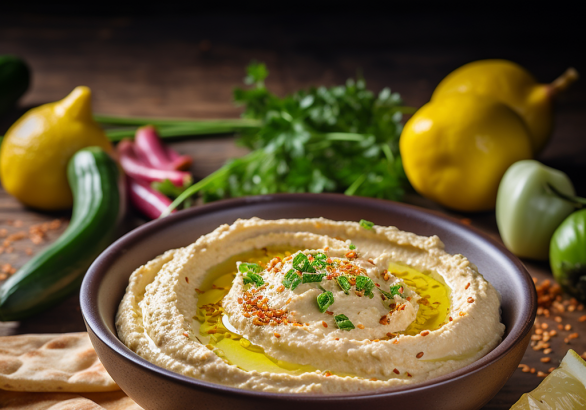Discover the secrets to making the best homemade hummus with our authentic Greek recipe. Learn how to achieve a creamy texture and rich flavor with simple ingredients.
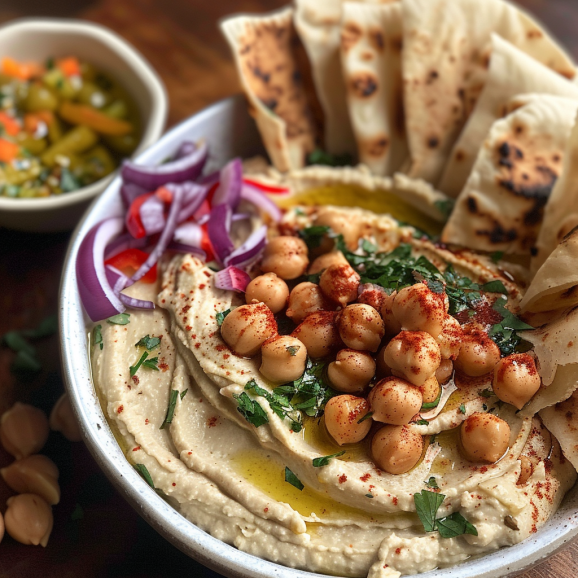
Introduction
A creamy blend of chickpeas, tahini, lemon, and garlic, is a staple in Mediterranean and Middle Eastern cuisines. This versatile dip is beloved for its rich flavor and smooth texture. In this blog post, we’ll share an authentic Greek recipe that will elevate your snacking and meal experiences. Follow our step-by-step guide to make the it right in your own kitchen.
The History
This dish has a long history that dates back to ancient times. Its origins are debated, but it is widely enjoyed across the Mediterranean and the Middle East. In Greek cuisine, it is often served as part of a meze platter, accompanied by fresh vegetables, pita bread, and olives. This simple yet delicious dish has gained global popularity for its nutritious ingredients and delightful taste.
Modern Popularity
In the 20th century, hummus began to gain popularity outside of the Middle East and Mediterranean regions. Immigrants brought their traditional recipes to Europe and North America, where it was embraced for its delicious taste and health benefits. The rise of health-conscious eating habits and the popularity of plant-based diets have further boosted Its status as a beloved global food.
Today, it is widely available in supermarkets, restaurants, and homes around the world. It is enjoyed not only as a dip but also as a spread, a salad topping, and even an ingredient in various recipes. Modern variations include flavored with additions like roasted red peppers, garlic, herbs, and spices.
Hummus, a beloved dish made from chickpeas, tahini, lemon, and garlic, is a staple in Middle Eastern and Mediterranean cuisines. Its rich, creamy texture and delightful flavor have made it a popular food worldwide. The history is as rich as its taste, with roots that trace back thousands of years.
Ancient Origins
The exact origins of are shrouded in mystery and are a subject of debate among food historians. Chickpeas, the primary ingredient in it, have been cultivated in the Middle East for over 7,000 years. Ancient texts and records indicate that chickpeas were a common food in ancient civilizations such as Egypt, Greece, and Rome. It is believed that the earliest forms of were created by these ancient peoples, who ground chickpeas into pastes and mixed them with various ingredients.
Ingredients for the Best Homemade Hummus
To make the best homemade hummus, you’ll need the following ingredients:
- Chickpeas: 1 can (15 ounces) or 1 ½ cups cooked chickpeas
- Tahini: ¼ cup tahini (sesame seed paste)
- Lemon Juice: Juice of 1 large lemon (about 3-4 tablespoons)
- Garlic: 2 cloves garlic, minced
- Olive Oil: 2-3 tablespoons extra-virgin olive oil
- Water: 2-4 tablespoons cold water
- Salt: 1 teaspoon salt, or to taste
- Ground Cumin: ½ teaspoon ground cumin (optional)
- Paprika: For garnish
- Fresh Parsley: Chopped, for garnish
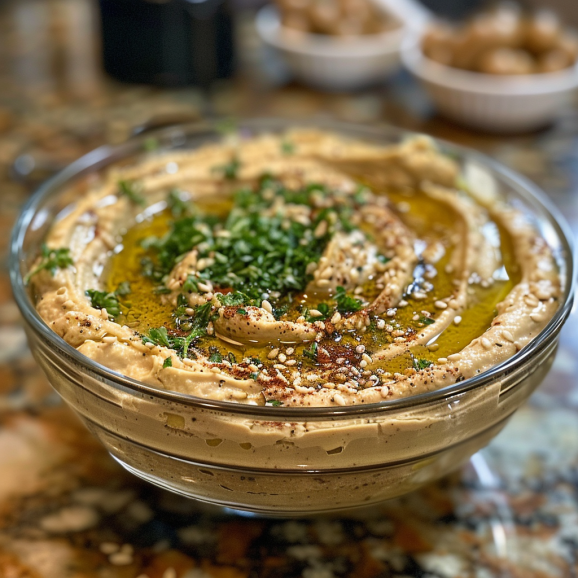

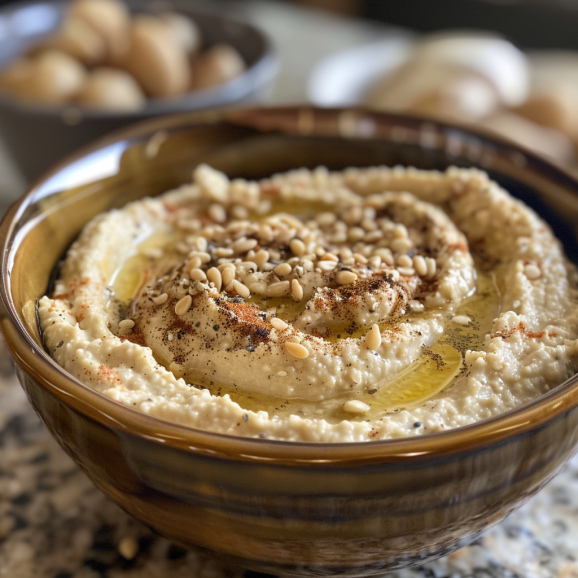
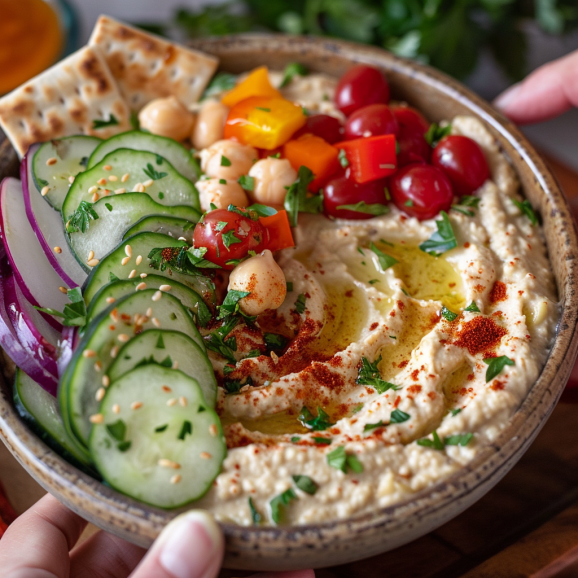
Step-by-Step Recipe
Step 1: Prepare the Chickpeas
- Drain and Rinse: If using canned chickpeas, drain and rinse them thoroughly. If using cooked chickpeas, ensure they are soft and well-cooked.
- Remove Skins: For an extra creamy texture, remove the skins from the chickpeas by gently rubbing them between your hands or in a clean kitchen towel. This step is optional but highly recommended.
Step 2: Blend the Ingredients
- Combine Ingredients: In a food processor, combine the chickpeas, tahini, lemon juice, minced garlic, salt, and ground cumin (if using).
- Blend Until Smooth: Blend the ingredients until a smooth paste forms. Scrape down the sides of the food processor as needed.
Step 3: Adjust Consistency
- Add Olive Oil: While the food processor is running, slowly drizzle in the olive oil.
- Add Water: Gradually add cold water, one tablespoon at a time, until the hummus reaches your desired consistency. Blend until it is creamy and smooth.
Step 4: Taste and Adjust
- Taste: Taste the and adjust the seasoning as needed. Add more salt, lemon juice, or garlic to suit your taste preferences.
- Blend Again: Blend once more to ensure all ingredients are well incorporated.
Step 5: Serve and Garnish
- Transfer to a Bowl: Spoon it into a serving bowl.
- Garnish: Drizzle with extra-virgin olive oil, sprinkle with paprika, and garnish with chopped fresh parsley.
Tips for Perfect Hummus
- Use Quality Ingredients: High-quality tahini and extra-virgin olive oil make a significant difference in the flavor of your hummus.
- Blend Thoroughly: Blend the hummus for several minutes to achieve a smooth and creamy texture.
- Adjust to Taste: Hummus is highly customizable. Adjust the lemon, garlic, and salt to match your taste preferences.
Variations of Hummus
- Roasted Red Pepper: Add roasted red peppers to the food processor for a sweet and smoky flavor.
- Garlic Hummus: Increase the garlic for a more intense garlic flavor.
- Herb Hummus: Add fresh herbs like basil, cilantro, or dill for a fresh, herby twist.
Serving Suggestions
Hummus is incredibly versatile and can be served in various ways:
- As a Dip: Serve with pita bread, fresh vegetables, or crackers.
- In Sandwiches and Wraps: Use as a spread for sandwiches and wraps.
- In Salads: Add a dollop of hummus to salads for extra protein and flavor.
- With Meze Platters: Include it in a meze platter alongside olives, feta cheese, and stuffed grape leaves.
Conclusion
Making this dish is a simple and rewarding process that brings the rich flavors of the Mediterranean into your home. This authentic Greek hummus recipe is perfect for any occasion, whether you’re hosting a party, preparing a family meal, or just looking for a healthy snack. Follow our guide to create the best homemade hummus that will impress your guests and become a staple in your kitchen.
Greek wine is another integral part of the country’s culinary heritage. With a winemaking tradition that spans thousands of years, Greece is home to a diverse range of wines that showcase the unique terroir and indigenous grape varieties of the region. Whether you’re a seasoned wine enthusiast or just beginning to explore the world of wine, Greek wine offers a delightful journey for the senses.
This guide will walk you through creating an authentic Greek Salad, offering tips to enhance its flavors and make it a standout dish on any table. This Greek Salad Recipe is a celebration of fresh, flavorful ingredients, perfect for a healthy lunch or a side dish at dinner. With this recipe, you can bring a taste of Greece to your table and enjoy a salad that is as nutritious as it is delicious. Whether you’re serving it alongside a main course or enjoying it by itself, a well-made Greek Salad is a testament to the beauty of simple, fresh ingredients.
An authentic Greek Salad, known in Greece as ‘Horiatiki’, is celebrated for its simplicity and fresh, vibrant flavors. This classic recipe combines ripe, juicy tomatoes, crisp cucumbers, sharp red onions, and briny Kalamata olives, all harmoniously balanced with a generous slab of creamy feta cheese on top. Unlike many western variations, traditional Greek Salad does not include lettuce.
Chef on a Bike: Your Gateway to the Rich Tapestry of Greek Culinary Arts
Chef on a Bike transcends beyond being a mere platform; it’s a thriving community where the zest for Greek culinary traditions is nurtured and celebrated. As you step into our domain, you’re embraced by a milieu enriched with the love for hearty Greek meals, the invigorating aroma of fresh herbs, and the congenial spirit of sharing a meal.
Our mission, though simple, resonates deeply; it’s about bridging the culinary continuum between the novice and the seasoned cook, intertwining age-old traditions with modern nuances, and creating a warm nexus between Greek cuisine aficionados and the comforting embrace of a Greek kitchen. Our platform is a treasure trove teeming with authentic recipes, insightful narratives, and interactive cooking sessions orchestrated by passionate Greek chefs whose every stir, chop, and simmer encapsulates the essence of Greek culinary ethos.
Extend your gastronomic horizons with more Greek culinary endeavors through these additional resources:
-
References:
- My Greek Dish – A hub for authentic Greek recipes.
- The Mediterranean Dish – Offering a variety of Greek and Mediterranean recipes.
- The Greek Foodie – Delve into Greek culinary traditions through various recipes.
- Lemon Blossoms – Discover a mix of recipes including Greek-inspired dishes.
- Souvlaki For The Soul – A modern take on classic Greek recipes.
- My Sweet Greek – Indulge in Greek culinary traditions through a variety of recipes.
- Olive Tomato – A blend of Greek and Mediterranean recipes aimed at a healthy lifestyle.
- Akis Petretzikis – The official website of Greek chef Akis Petretzikis offering a treasure trove of Greek recipes.
As you traverse through the delectable spectacles of Greek cuisine, under the expert guidance of seasoned Greek chefs at Chef on a Bike, each recipe, article, and cooking session is designed to be a stepping stone into the heart of Greece’s cherished culinary tradition, offering a heartfelt celebration of life, tradition, and shared culinary adventures. Welcome to Chef on a Bike, where every meal is a soulful voyage into the rich, enduring legacy of Greek gastronomy.

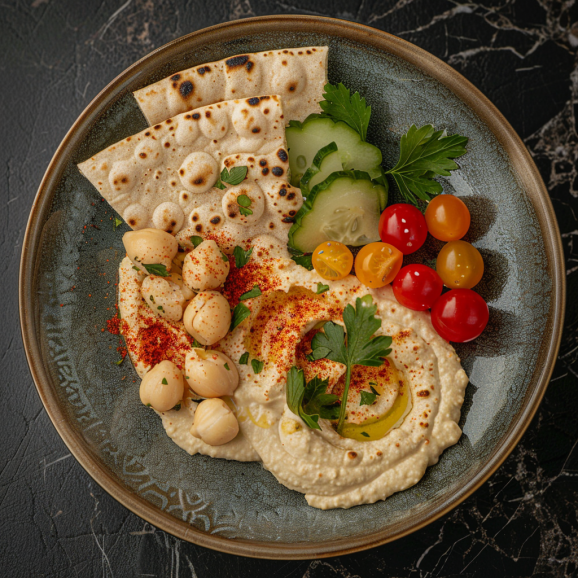


From www.chefonabike.com with their titles hyperlinked:
- Delicious Greek Hummus Recipe: Discover the secrets to making a creamy and flavorful Greek hummus.
- Baklava: Greek Walnut & Pistachio Cake: Learn how to make traditional Greek Baklava with walnuts and pistachios.
- Greek Festival 2024: Get ready for the upcoming Greek Festival with details and highlights.
- Beef Souvlaki: Juicy and Tender Chunks: A guide to making the perfect Greek beef souvlaki.
- Mediterranean Diet: A Healthy Choice: Explore the benefits of the Mediterranean diet.
- Greek Easter Kokoretsi: Cooking Methods & Recipe: Traditional methods and recipes for Greek Easter Kokoretsi.
- Manuka Honey Health Benefits: Learn about the health benefits of Manuka honey.
- Find Vegetarian Recipes: A collection of delicious vegetarian Greek recipes.
- Greek Christmas Traditions: Discover how Christmas is celebrated in Greece.
- Mediterranean Greek Salad: A Refreshing Delight: Make a refreshing Greek salad with this simple recipe.
- Greek Kataifi Dessert: A traditional Greek dessert made with shredded phyllo dough and nuts.
- Best of Greek Cheeses: Explore the diverse and delicious world of Greek cheeses.
- Rare Ikaria Honey: Learn about the unique and rare honey from Ikaria.
- Greek Yogurt Benefits: Discover the health benefits of Greek yogurt.
- Greek Food Festivals and Traditions: A guide to the various food festivals and culinary traditions in Greece.
- Greek Language, Culture, and Cuisine: An exploration of the Greek language, culture, and cuisine.
- Greek Cuisine: Tradition of Greek Breads: Learn about the traditional breads of Greek cuisine.
- Greek Koulouri: Sesame Bread Rings: Make traditional Greek sesame bread rings.
- Succulent Keftedes: Greek Meatballs Meze: A recipe for making succulent Greek meatballs.
- Greek Egg Dishes: A Protein-Packed Start: Protein-packed Greek egg dishes for a hearty start to the day.
Each title is now hyperlinked within the description for easy access.






